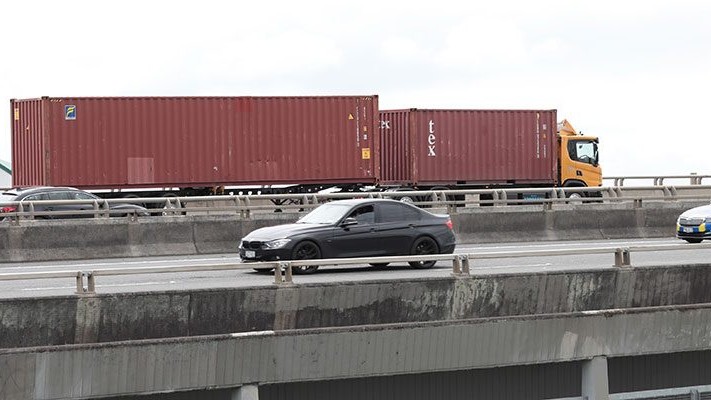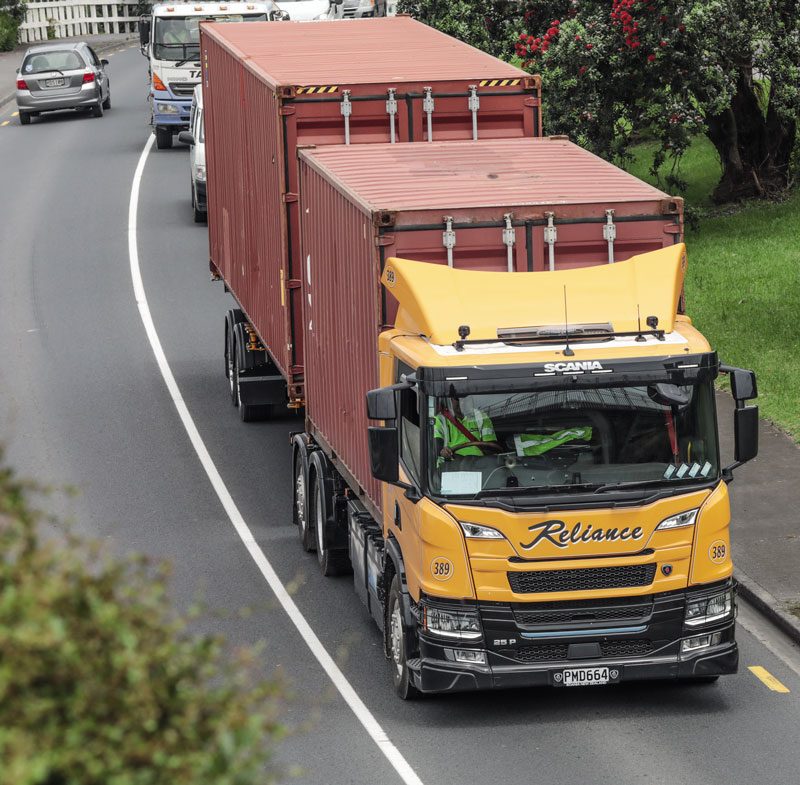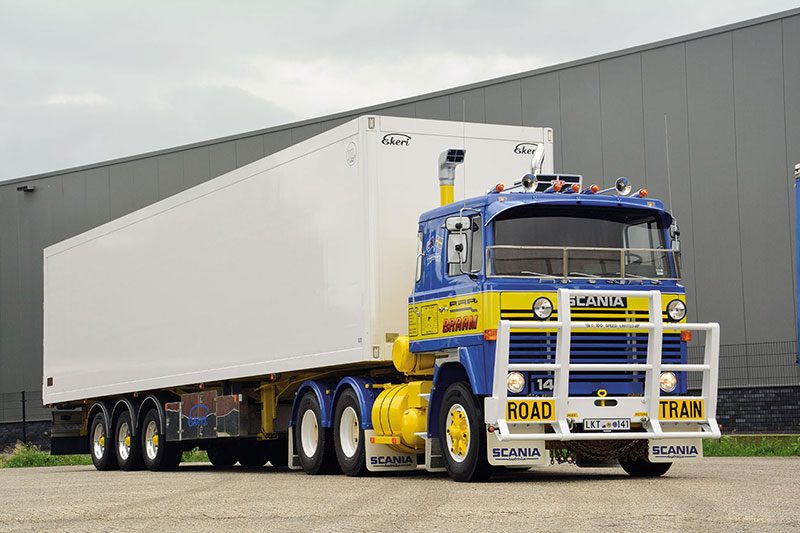The proof is in the pudding

“You can do a thousand PowerPoint presentations, but ultimately, you have to have something that does the job reliably for the customer, is supported, and makes them money.”
If you want the crux of any truck-related product engineering issue summarised in 50 words or less, there wouldn’t be many people in New Zealand who wouldn’t point you in the direction of Alfons Reistma, senior product engineer pre-sales at Scania New Zealand.
“I have been vocal in this area and not always popular as a result, but if the government wants decarbonisation, all parties must come to the table and contribute.
“VDAM [vehicle dimensions and mass] was never designed and intended for decarbonisation and zero emissions. That means we need to make changes. Zero-emission trucks need more space on the chassis for battery packaging, not to mention a review of axle weights, axle configuration and overall length.
“I get laughed at when I say it, but maybe the easiest solution is simply adopting the European commercial vehicles standards for BEVs. Then half of the big problems disappear, and supply into what is an ideal market is seamless.
“Likewise, the infrastructure. If the current highway network is not resilient for climate change – with all of these broken surfaces and potholes – how is it ever going to be resilient for electrification? We need to stop arguing and just sort it – and that means spending money.
“I’d like an industry representation made up of OEMs – that would give our issues more weight. The customer will buy what the customer wants to buy, but we have questions as suppliers that need addressing – and quickly. Trucks are not cars; they’re not a one-size-fits-all. They are a commercial asset intended to make money, and if ‘we’ can’t supply that, customers won’t buy them. I’m not knocking NZTA, but there’s a need for action.”

The overarching sentiment in Alfons’ tone is that the equipment is no longer on its way, it’s here – and ‘we’ should be more ready than we are. Given the appropriate application and energy analysis, customers can now buy Scania’s BEV as they would any other product, and the offerings in the company portfolio will only increase.
The relationship between Alfons and Mark and Grant goes back to Alfons’ time as a pre-sale engineer at Daimler agent, Trucks and Trailers.
“I’m always one for having some level of future-focused project running, and I’d begun investigating zero-emission options from Daimler. Reliance was buying Euro-6 Mercedes-Benz trucks and was keen to progress to zero-emissions trucks as the next part of Project Switch.”
At about this time, Daimler restructured its New Zealand representation, resulting in Scania New Zealand acquiring the Trucks and Trailers business shortly after. Although that meant a switch between two of the biggest camps in the global automotive playpen, for Alfons, it was a return to his roots, having worked for Scania for many years from 1984.
“Our Scania New Zealand CEO at the time, Mattias Lundholm, tasked me with advancing our zero-emissions offerings soon after he arrived on the scene. We canvassed some customers, but the Darrahs were the perfect early adopters and first customers. They were well along their zero-emissions journey. They understand the technology, the energy, and the potential,” Alfons explains.
Getting the new model of any series- produced truck to market is a significant project. When it’s the first of a new propulsion methodology, it takes on a whole new dimension. There’s no question that being an outpost of the Scania ‘mothership’ in Södertälje, Sweden, has benefits for New Zealand.
“It’s hugely challenging. We all come from a diesel background. Sure, there’s lots we know about chassis, axles and loadings, but there’s learning at every stage.
“We have an in-house team here that includes me, performance director Rob Covich, and key account manager Craig Pepperell. We analyse every enquiry and see if there’s a fit. It’s an evolution, for sure. If you come in and want a BEV that’s a 770S equivalent to cart stock off the East Coast, the answer is no. We’re not there. That might change a few years down the track for sure, but not now. If you want a metro or regional distribution truck, however, that’s a different story. And at the end of the day, there’s more to be gained decarbonising Auckland than Tikitiki.”
As it will be elsewhere in the world, the purchase of tomorrow’s trucks will be a far more considered thing. The coat of many colours that diesel propulsion mistakenly afforded does not apply in the zero-emissions world.
“The Reliance trucks are on Scania Connected Vehicles like any other truck, and although the dataset is small by comparison with the diesel fleet, we can cost and evaluate a BEV truck to a specific task pretty accurately. The Reliance trucks are performing as we’d calculated, but they’re also doing exactly what the customer said they would, and that’s a big thing.
“The key to the whole thing is energy. How to get it, pay for it, and how best to utilise it. It’s a whole new world, with the ability to pay less depending on the time you buy it and even produce it yourself – likewise, the driver. Going forward, operator behaviour will be more critical than ever. With BEVs, driving well is not just about limiting cost as it is with an ICE. With the right anticipation and use of regeneration, you can put energy back into the system in the act of working.” As Mark put it: “That’s money back in the bank.”
“Obviously, on our part, there’s a lot to be done in the years ahead to ensure our techs and trainers are ready to support the product,” Alfons says.
With the two Reliance trucks being real-world working machines, Alfons says the interest and inquiry has ratcheted up several notches. “They’re now out there. They’re seen working, doing the job they were bought for. BEV trucks in the heavier weight categories are here.”
AC D’CODER
The delivery
| AC | Alternating current – Flow of electrons switches back and forth at regular intervals or cycles |
| DC | Direct current – Flow of electrons is consistent in one direction |
| Voltage | Unit of electrical potential difference or the size of the force that sends the electrons through a circuit |
| Ampere | Measure of current flow |
| Ohm | Unit of electrical resistance (force that counteracts the of current) |
The Units
| Joule | Energy dissipated as heat when an electric current of 1 ampere passes through a resistance of 1 ohm for 1 second |
| Watt | 1 watt = 1 joule per second (A 100-watt light bulb is burning at 100 joules per second) |
| Kilowatt | 1000 watts |
| kWh | 1000 watts used over a one-hour period |
| Megawatt | 1,000,000 watts |
| Terawatt | One million million watts (Europe is predicted to need 37 terawatt hours by 2030) |
The chargers
| CCS | Combined Charging System can use combo 1 and 2 connectors and provides electric vehicle charging up to 350kW (500 amps) |
| MCS | Megawatt charging system – under development, with a connector rated for a maximum charging rate of 3.75MW (3000 amps DC) |
The vehicles
| ICE | Internal combustion engine (Just so you know) |
| EV | Electric vehicle |
| BEV | Battery electric vehicle |
| HEV | Hybrid electric vehicle |
| PHEV | Plug-in hybrid electric vehicle |
| FCEV | Fuel-cell electric vehicle |
Read more
Super Swede
0 Comments11 Minutes
Farm fresh
0 Comments11 Minutes
Lights by night
0 Comments3 Minutes
If the cap fits
0 Comments13 Minutes





